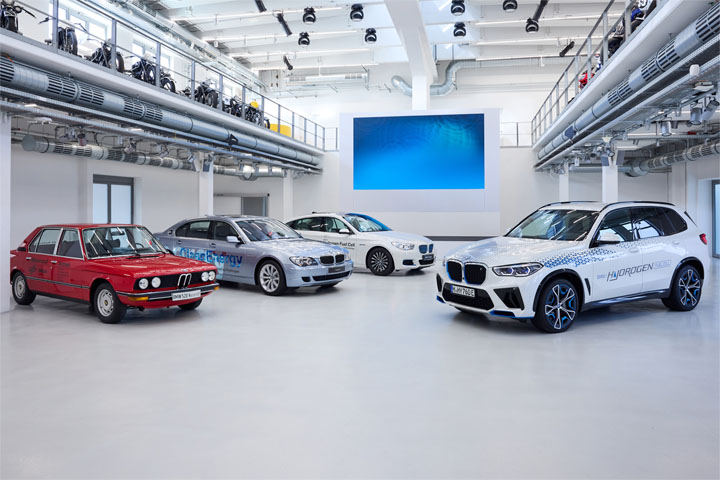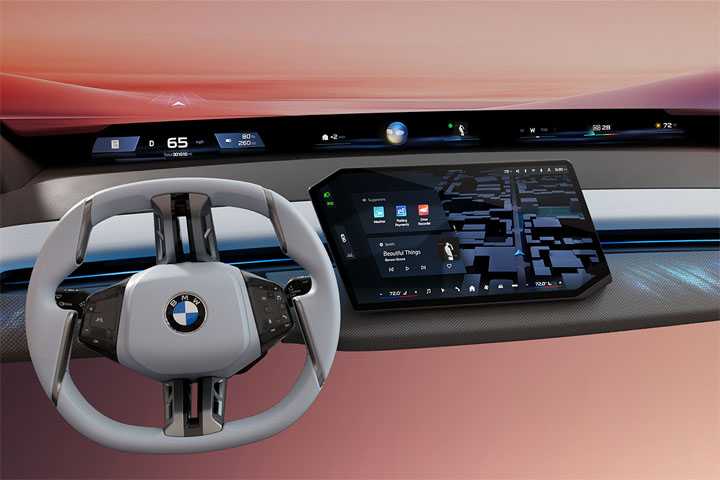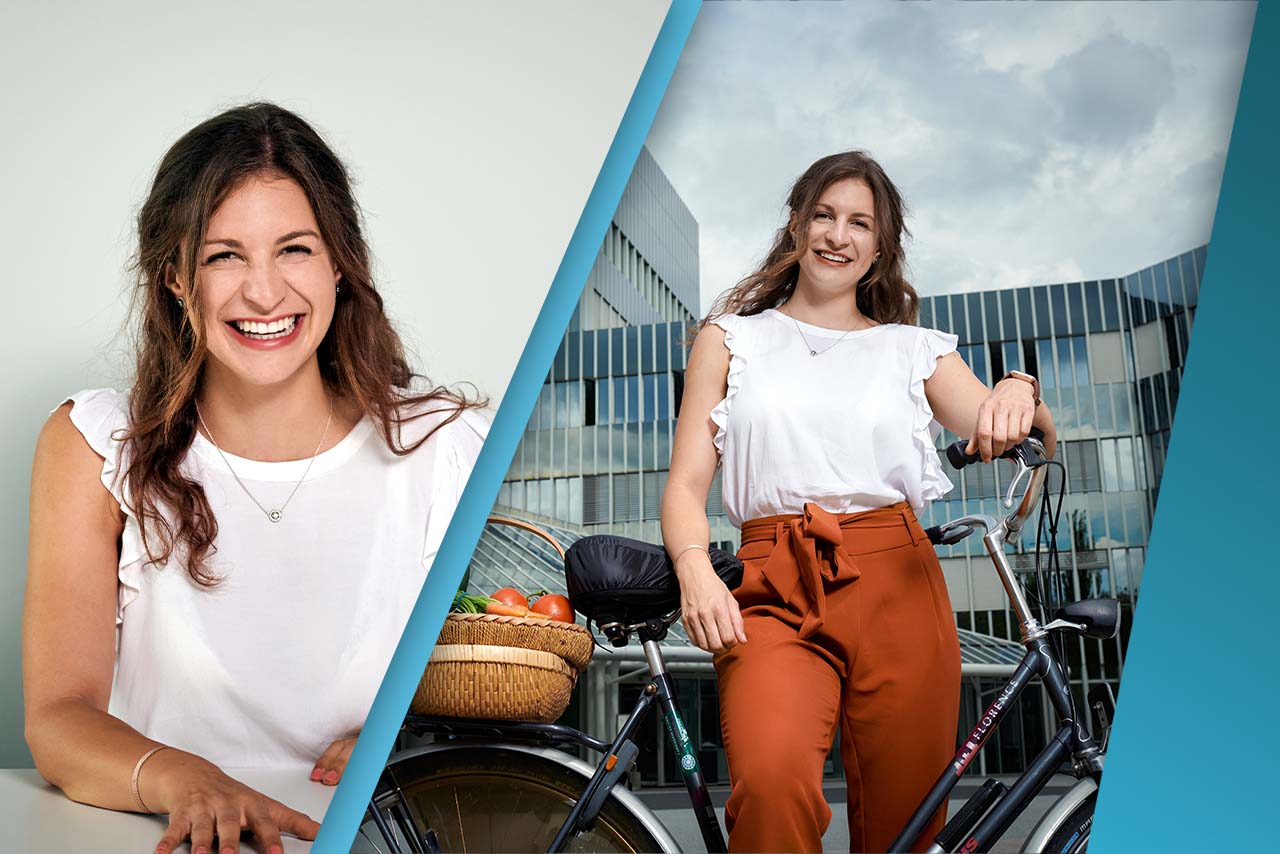In the “WEffect” sustainability series, the BMW Group highlights the sustainable contribution made by a wide range of people in the company – and the motivation that inspires them. Today: Thomas Stiede.

Sustainability has many facets at the BMW Group because we are using this term to harmonise business, the environment and society. If we are to successfully put these high standards into practice, we need our employees’ commitment. Everyone can play their part in making the BMW Group sustainable.
So, who are all these colleagues who make sustainability part of their everyday work? What drives them to roll up their sleeves throughout the company? In its “WEffect” sustainability series, the BMW Group introduces employees who play their daily part in the broad and responsible further development of our company.
In this edition of our series, Thomas Stiede, responsible for process improvement in logistics at the BMW Group plant in Leipzig, talks about the challenges of hydrogen and his major goal of converting all BMW Group logistics vehicles to CO2-free drive systems.
Thomas Stiede, when did you first start grappling with the climate and its change?
Thomas Stiede: At seven years old, I realised for the first time that there was less and less snow in winter here in the Magdeburger Börde. We hardly went sledging any more. I have been watching the changes ever since – although of course it took many more years until I really understood the connections. Today, I also see the thoughts, even worries, that my three children have. That concerns me greatly, of course.
Is that the reason why you are not only responsible for optimising logistics processes at the BMW Group plant in Leipzig, but have also gained something of a reputation as a hydrogen expert?
Stiede: At some point I understood that we have caused at least part of the climate problem ourselves because we use fossil fuels to generate heat and electricity – and that we therefore bear responsibility. I understood that we have to change if we are to get it back under control. At the same time, our energy supply, our basic needs, have to be guaranteed. We already have the technologies to use solar, wind and hydropower for energy production – now we are faced with a storage issue. We can learn from nature here too; for example, nature converts low-energy inorganic substances into high-energy organic substances using photosynthesis. The sweet apple that we can store all winter is a great example. It’s no different with energy than it is with food – but, unfortunately, we do not yet have sufficiently large storage facilities to compensate for fluctuations in renewable energies. I am concerned that we could be heading for a blackout if we don’t have these storage facilities. That is why electricity alone, even if it does all come from renewable sources, is not always the right solution. We also see this in logistics. For example, charging times of the batteries on electric forklifts are too long and the range in multi-shift operation is too short. The situation is similar for all heavy – and thus energy-intensive – commercial vehicles, such as trucks, trains and even aircraft.

So, is that where hydrogen comes in?
Stiede: Exactly. However, handling hydrogen brings its own challenges and safety issues. The technicians must be specially trained, as must the users and the plant fire brigade. In the end, though, hydrogen is just a gas, like natural gas. So if we can handle natural gas, we can handle hydrogen. Hydrogen can be stored and transported through pipelines. New safety issues mean it is much easier to use this gas in a closed transport system such as an industrial plant than in normal road traffic. However, there is still not enough of a large-scale filling station network for commercial vehicles. And the hydrogen has to be produced in a ‘green’ way, of course, otherwise it doesn’t actually help the climate. We have been operating an in-house hydrogen filling station system for initially eleven logistics vehicles, such as forklift trucks, in Leipzig since 2013. It was the first pilot project of its kind in Germany. Two more filling stations and 70 vehicles were added in 2017. We will soon be putting our fifth hydrogen filling station into operation and the fleet has grown to 130 vehicles – we operate the largest German H2 fleet here. The National Hydrogen and Fuel Cell Technology Innovation Programme (NIP) is supporting the further development of tank technology and vehicles.
That sounds like hydrogen logistics on a grand scale. Is that your goal?
Stiede: My goal is to convert all logistics, including all logistics vehicles, to CO2-free drives. From forklifts to cargo trucks. The end result is the vision of a CO2-free plant, and one that at the same time is economically viable. If we manage to achieve this, BMW will once again be the technology leader. And at the same time a driver, because everyone else will follow suit. This is the goal I have set myself for my working life – I have until 2047. But, of course, it is progressing at an ever-increasing pace all the time.

At the moment, all lights are on green, so you have quite a tailwind for your projects. What helps you when you are in a slump though?
Stiede: I am a skilled craftsman. I want to see the results of my labours at the end of my working day. That’s why I can also spot small bits of progress in the project and am happy about it. We also get a lot of recognition from outside.
Is there any one thing you are particularly proud of?
Stiede: My six-year-old son told his kindergarten: “My dad invented hydrogen and now he’s saving the environment”. Of course, that’s not at all accurate, and I explained everything to him again so that he understood it correctly. Still, it makes me incredibly proud that my children perceive my commitment in this way.
Is that your real motivation, your drive?
Stiede: Yes, at least in part. I am motivated by the significance of my work – and at the same time I am incredibly enthusiastic about technology. However, I am not the only one with this enthusiasm; it is shared by our entire company. That is why I also firmly believe that we can find the solutions we need for our climate and environmental issues through technology. If we are also headstrong in our focus on the goal of “CO2-free” independent of fluctuating trends and fads, then we can be truly innovative and successful.
So, when is it good enough? When are you satisfied?
Stiede: When all BMW vehicles drive and are also produced to operate CO2-free without losing the qualities that are synonymous with the BMW brand. My personal interpretation would be a highly dynamic and sporty SUV with the usual top speed, a range of many hundreds of kilometres – and of course not a single gram of CO2 emissions in its entire life cycle.
In the upcoming portraits from our “WEffect” sustainability series, committed colleagues will also describe their motivation and explain the contribution they are making to sustainability within the BMW Group.






